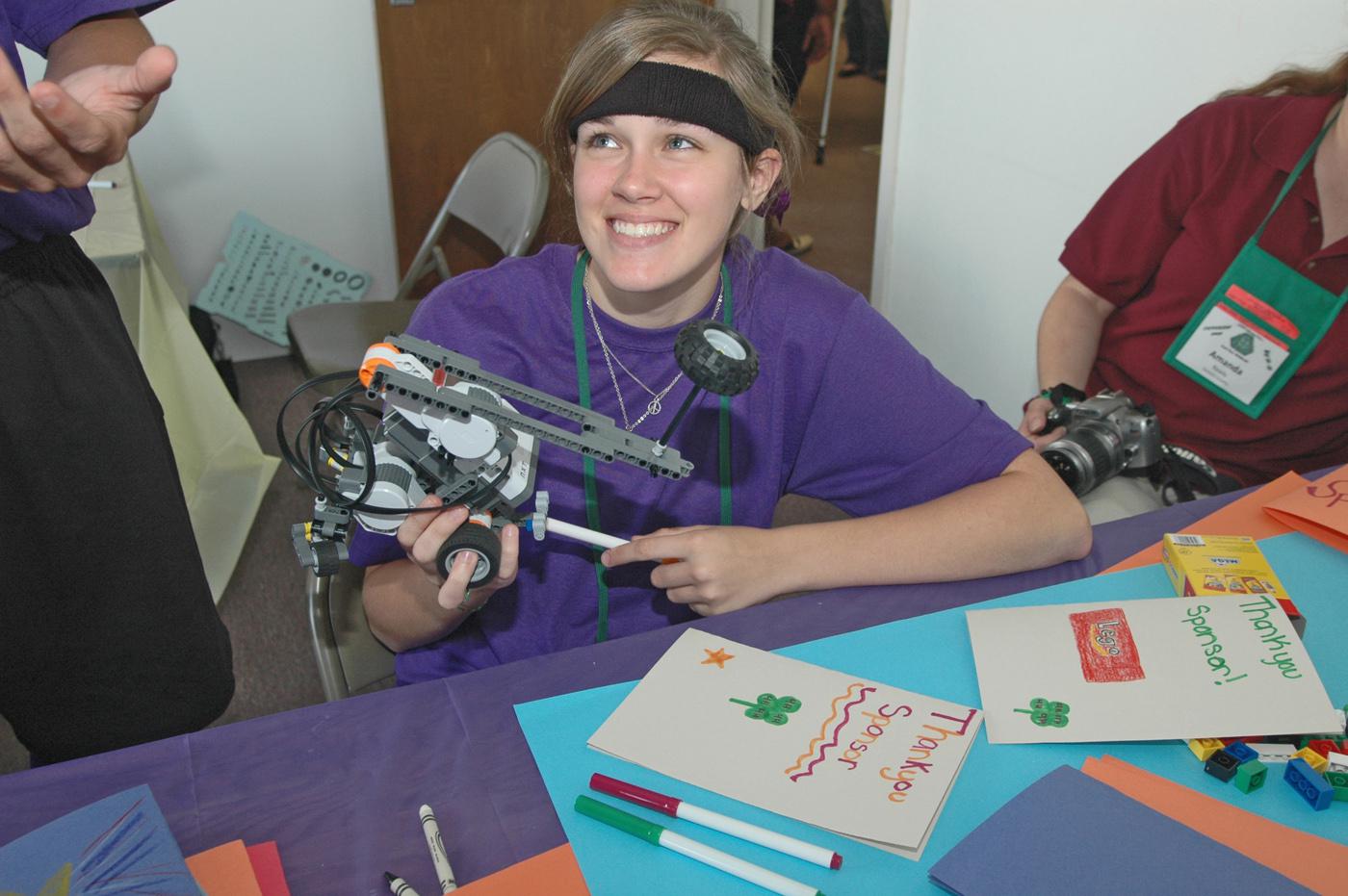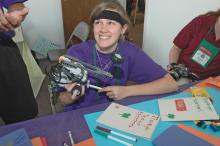Information Possibly Outdated
The information presented on this page was originally released on June 4, 2009. It may not be outdated, but please search our site for more current information. If you plan to quote or reference this information in a publication, please check with the Extension specialist or author before proceeding.
4-H robotics challenge puts learning in gear
By Patti Drapala
MSU Ag Communications
MISSISSIPPI STATE – Educators who pioneered the 4-H movement recognized the importance of using hands-on activities and mental exploration to encourage youth to open themselves to new ideas and experiences.
While that basic premise of serving youth by helping them develop life skills remains important, many 4-H projects are clearly different from those of a hundred years ago. Today’s 4-H’ers can explore their world through numerous projects involving science, engineering and technology.
Robotics, a project area that embraces all three categories, is growing in popularity with many 4-H clubs in Mississippi. Several 4-H members came to the annual Club Congress at Mississippi State University to compete in the robotics challenge with machines they designed, assembled and programmed.
The national 4-H Robotics project promotes learning by encouraging youth to practice critical thinking, decision making and communication as they design and program robots. Mariah Smith, a computer applications instructor with the MSU Extension Service, coordinated Mississippi’s recent 4-H robotics contest. She also conducts robotics workshops, videoconferences and camps to help 4-H members, Extension youth agents and volunteer leaders understand design and computer programming concepts.
“The 4-H members do most of the work in building these robots,” Smith said. “The kids have help from their youth agent and volunteer leader, but it’s their responsibility to think things through when designing the robot and making sure it can complete the tasks they ask it to do.”
Participants group themselves into teams of three-four people. They pick a nickname and together build an NTX robot from a commercial kit. These kits include three motors, five sensors and the “brick,” the robot’s programmable brain.
The team designs their robot and uses a laptop with Mindstorm software to program the brick. The brick works in tandem with arm extensions and sensors to maneuver the robot through an obstacle course, or floor mat.
“We wrote a program with the software and then built the robot according to that plan,” said Logan Luke, 15, of Olive Branch, a member of DeSoto County’s Globo Gym Purple Cobras. “We worked and worked until we got it right.”
Competitors also receive instructions to construct a practice mat for the obstacle course. They devise a strategy to achieve the objectives of the course, such as moving an extender arm to pop balloons, herd small objects or touch a lever to control another device. The team creates a strategy that they hope moves the robot through the course in a minimum of time and earns the maximum number of points. This strategy requires team members to plan and be patient and persistent as they learn together.
“We explored how to make the robot work and how best to program it to hit all the marks on the mat,” said Purple Cobra teammate Jonathan Austin, 15, of Eudora. “Our goal was to win the competition.”
The robotics challenge at Club Congress has several ways for teams to earn points. Each team must submit a video representing their robot, complete two competitive three-minute runs on the course, present a set of oral reasons to judges and show gamesmanship. The team can earn additional points by making greeting cards for armed services personnel stationed overseas.
“Making the cards was a great part of the competition because it let the men and women of the armed forces know we think about them and love them for making sacrifices to honor their country,” said Keelan Ready, 15, a Purple Cobra from Hernando. “I know two people from my church who are serving in Iraq right now.”
Teams had a practice run and were allowed to make adjustments to the robot between the two competitive rounds. The scenario for the runs simulated chaos at the State Fair. Cows and sheep broke out of their pens and created havoc on the midway. One marauding pig shut down the Ferris wheel and the ducks that left the pond were about to be trampled. The robot’s task was to herd the animals back in their pens and pond, re-start the Ferris wheel and pop balloons that had drifted onto the midway within three minutes.
When the challenge ended, the Purple Cobras claimed first place. Their main competition came from the Newton County Geek Squad who placed second and another Desoto County team, the Evil Monkeys, who were third.
The team adopted their unique nickname in honor of the athletic team in the 2004 popular movie “Dodgeball.” They wore purple tee shirts and knee socks, and black headbands, knee-length shorts and shoes. The trio presented a confident swagger and left feeling exuberant after the competition.
Also feeling pleased with the performance of both of her teams was DeSoto County 4-H Agent Carol Sicilia.
“The robotics project is a great learning tool for children,” she said. “We want to have more after-school activities such as this to help 4-H members prepare themselves for college, employment and life as they become adults. We’ll be back next year to compete again.”



